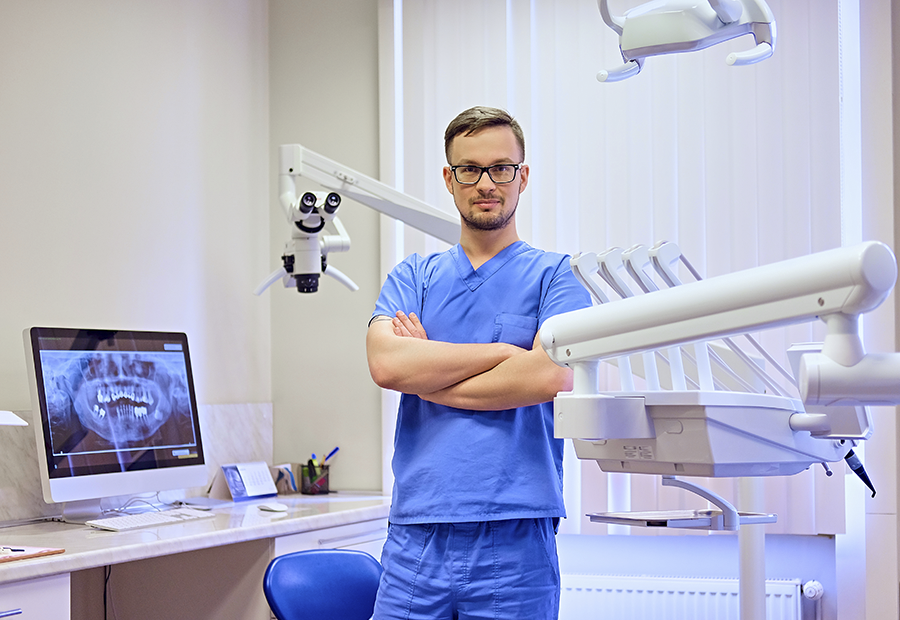Oral Surgery/Extractions
As determined by you and Dr. Voloshyna, a tooth extraction may be necessary for any number of reasons. For example, some teeth must be removed because they are extremely decaying, while others have extensive periodontal disease or have been damaged in a manner that cannot be fixed. If you have impacted or misaligned teeth, they may need to be removed.
When a single tooth is removed, it may lead to difficulties with chewing, jaw joint disorders, and shifting teeth, all of which can have a negative effect on your oral health.
Most often, Dr. Voloshyna will explore alternatives to extractions and tooth replacement in order to prevent these problems.
Because of any variety of causes, both you and your doctor may decide that you require a tooth extraction. Some teeth must be removed because they are badly decaying and cannot be repaired. The teeth of others may have advanced periodontal disease or be irreparably damaged. If you have impacted or misaligned teeth, you may need to have them removed in order to prepare for orthodontic treatment.
When a single tooth is removed, it may cause difficulties with chewing, jaw joint disorders, and shifting teeth, all of which can have a negative effect on your oral health.
As a result of these risks, your dentist will explore alternatives to tooth extractions, as well as options for replacing the tooth that was removed.
Extraction
Your tooth, jawbone, and gums will need to be numbed with a local anesthetic before the extraction.
A lot of pressure will be exerted on your body throughout the extraction procedure. When you rock your tooth back and forth to expand the socket for extraction, you’ll get a result like this one.
Anesthetic numbs the nerves, preventing pain transmission, but the pressure-transmitting nerves are not impacted. Please let us know as soon as possible if you experience any discomfort during the extraction.
Making Cuts in a Tooth
Some teeth need to be cut into sections. A frequent treatment when a tooth is stuck in its socket too tightly or the root is curved, preventing the socket from expanding sufficiently to remove it. Rather of removing the whole tooth at once, the dentist simply slices it into pieces and removes them one at a time.
After Tooth Removal
An immediate blood clot is required after tooth extraction to halt the bleeding and begin the healing process. After the appointment, bite on a gauze pad for 30 to 45 minutes. After 30 minutes, replace the gauze pad and bite hard for another 30 minutes if bleeding or leaking continues. This may need to be repeated many times to stop the blood flow.
A blood clot must not be disturbed or dislodged after it has formed. No forceful rinsing, sucking on straws, smoking, consuming alcohol, or brushing teeth near the extraction site for 72 hours after the extraction has taken place. If the clot is removed or dissolved, the healing process may be hindered. Do not engage in strenuous physical activity for the following 24 hours, since this may raise blood pressure and may cause additional bleeding.
Following extraction, you may have some discomfort and edema. Applying an ice pack or a bag of frozen peas or corn can help reduce swelling. Pain medicines should be taken as recommended. Swelling typically decreases within 48 hours of the injury occurring.
Use pain medicine according to the directions on the label. Please contact our office if the medicine is not functioning. Keep taking antibiotics for as long as recommended, even if the signs and symptoms of illness have disappeared. Keep hydrated and consume nutrient-rich foods on the day of extraction. As soon as you feel comfortable, you may resume regular eating.
After 24 hours, you should continue your regular dental regimen. As part of your daily routine, you should brush and floss your teeth at least once a day, as well. This will assist to speed up the healing process and keep your tongue fresh and clean for a long time.
As soon as your symptoms subside, you may resume regular activities. As soon as you have excessive bleeding, intense discomfort, or swelling that persists for more than two days, contact our office right away!
In order to replace a missing tooth, you may use bridges or implants.

